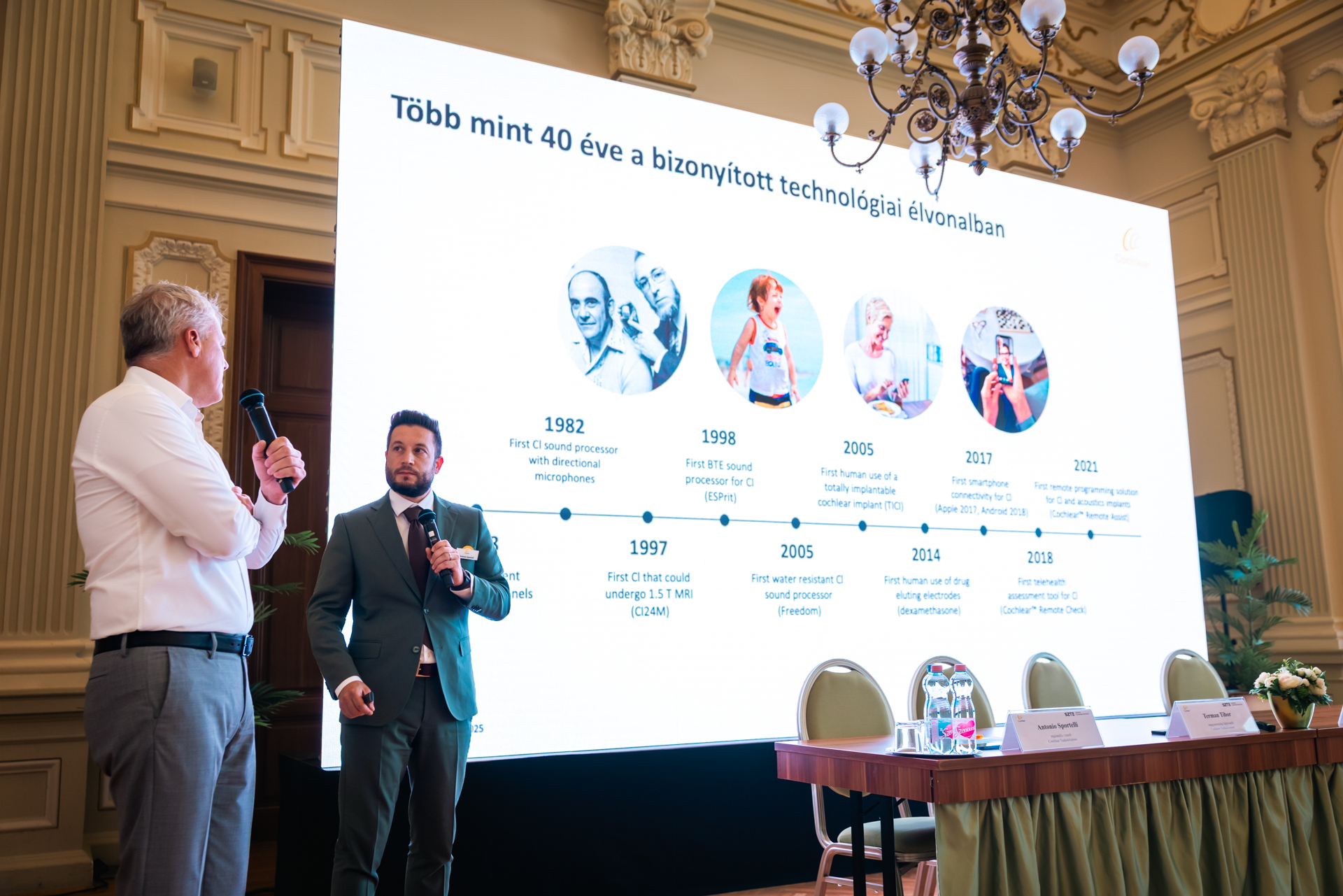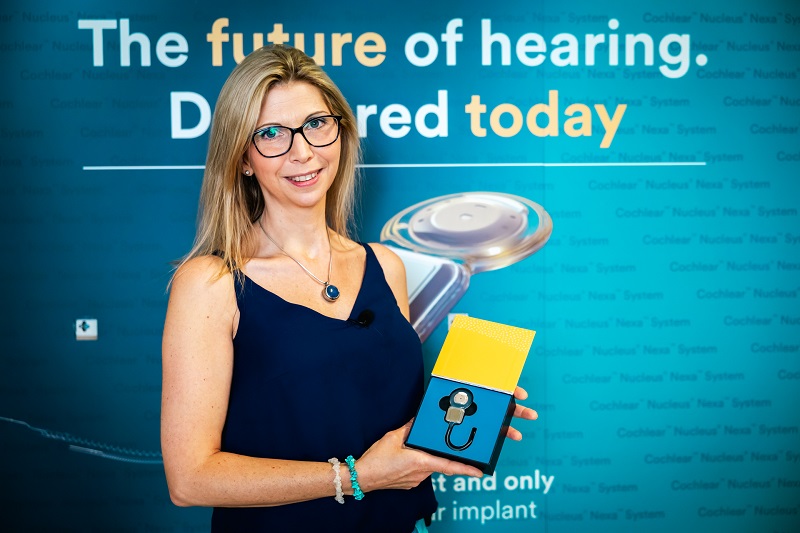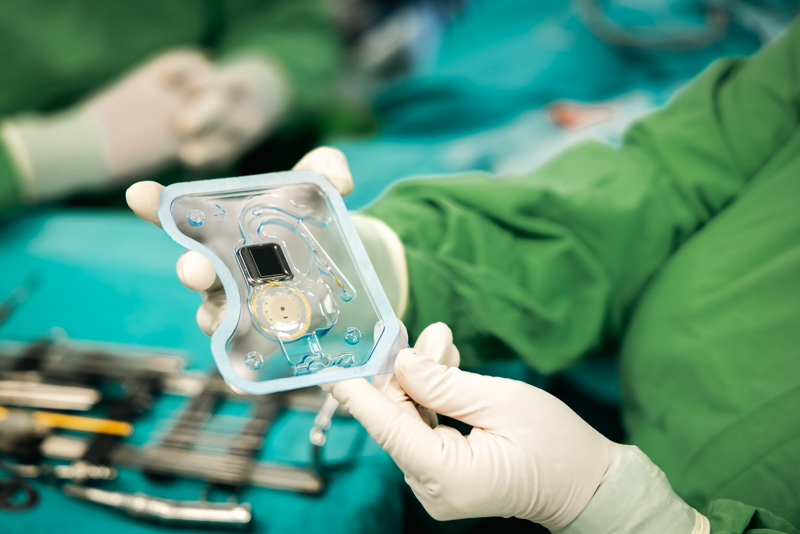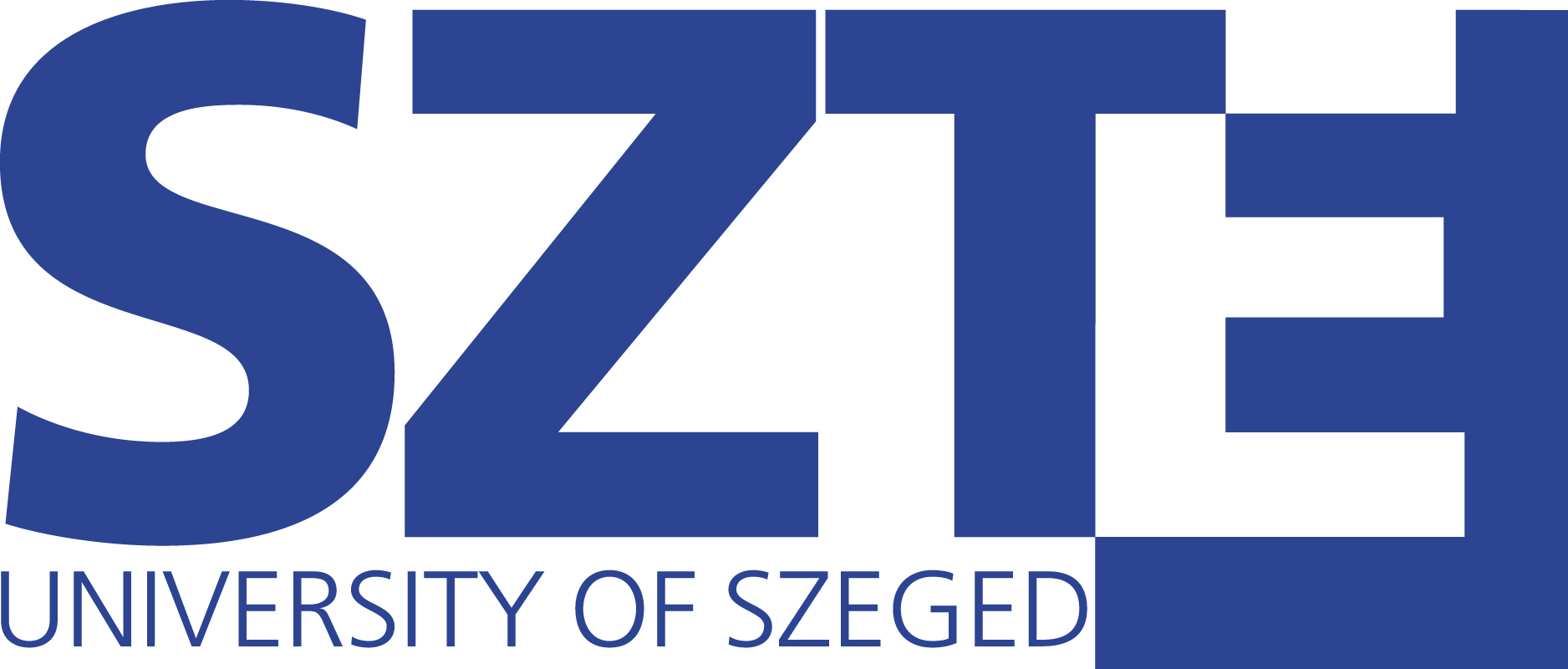
An eleven-year-old boy named Loránd has become the very first person in Hungary – and one of the first in the world – to receive a smart cochlear implant, the latest innovation in high-end hearing technology. The procedure was carried out on June 25, 2025, at the Department of Oto-Rhino-Laryngology and Head-Neck Surgery of the Albert Szent-Györgyi Clinical Center at the University of Szeged. Thanks to this pioneering device, Loránd now has a renewed chance to experience natural hearing again – something he had been gradually losing despite using a hearing aid.
Behind Loránd’s groundbreaking procedure is a team of specialists from the Szeged Hearing Improvement and Implantation Working Group, who rely on state-of-the-art surgical tools for precision ear surgery. Their work is made possible by the University of Szeged’s uniquely modern infrastructure, which provides some of the most advanced conditions in the country for cochlear implant procedures. Building on this foundation, the Department of Oto-Rhino-Laryngology and Head-Neck Surgery at the Albert Szent-Györgyi Clinical Center has emerged as a leader in developing and applying cutting-edge solutions that elevate patient care to new heights. One such innovation is the Nucleus® Nexa™ Implant System – the world’s first smart cochlear implant – which is poised to transform the field of hearing restoration and expand possibilities for patients and physicians alike.
The one-of-a-kind device was implanted in Szeged on June 25, 2025, during an exclusive surgical procedure performed in the presence of members of the press. The details were later shared at a dedicated press conference.

Prof. Dr. László Rovó performing the implantation of the world’s first smart cochlear implant in Szeged on June 25, 2025.
Photo by István Sahin-Tóth
Thanks to his traditional hearing aid, eleven-year-old Loránd – known to his family and friends as Lóri – was able to learn to speak alongside his peers. However, as his hearing continued to deteriorate, it became increasingly difficult for him to follow lessons at school or understand his parents and friends. Faced with these growing challenges, the family turned to a solution they already knew well: Lóri’s younger brother has severe hearing loss and received a cochlear implant some years ago. Encouraged by the positive outcome, they felt this advanced solution could be the best option for Lóri as well. Subsequently, on June 25, the procedure was performed by the Szeged Hearing Improvement and Implantation Working Group, led by Prof. Dr. László Rovó. In this context, it is worth noting that the Szeged team has also used a surgical robot called RobOtol in similar procedures.














Click the image to view István Sahin-Tóth’s photo gallery.
Lóri’s mother, Mónika Hankó, shared that their younger son has been living with a cochlear implant for four years, and the results have been overwhelmingly positive. For the family, the scientific breakthroughs behind these implants have made a world of difference. They give their sons the chance to take part fully in everyday life – attending the same schools as other children and even enjoying activities like playing music or participating in sports. The fact that the external units of these implants also come in a waterproof version is an added bonus. Given all this, the parents chose the University of Szeged as the place for the surgery, trusting in the excellent reputation of its medical professionals and the clinic’s extensive experience with this type of procedure.

Lóri’s mother, Mónika Hankó
Photo by István Sahin-Tóth
Following the surgery, the Nucleus® Nexa™ Implant – the world’s first and only smart cochlear implant – was presented to the public by experts at a press conference. The event took place in the ceremonial hall of the University’s Main Building and was attended by Tibor Terman, Hungarian representative of Cochlear; Prof. Dr. László Rovó, Rector of the University of Szeged; Júlia Lantos, President of the Hungarian Cochlear Implant Association; and Cochlear’s regional director Antonio Sportelli, along with colleagues Katharina Roessl and Robin Turek.

At the press conference, it was emphasized that the Nucleus® Nexa™ Implant builds on Cochlear’s more than four decades of experience with reliable implant systems and its leading role in technological innovation – ushering in a new era in cochlear implantation. It is the first implant capable of continuous self-monitoring to optimize safety and performance, and its firmware can be updated over time, making future innovations accessible to patients. Notably, the device enhances usability and all-day battery life through dynamic power management and offers a seamless hearing experience with the world’s smallest and lightest sound processor.

The latest cochlear implant, marking a new era in hearing restoration
Photo by István Sahin-Tóth
“This surgery marks the beginning of an entirely new world. This device represents a true milestone in medical technology,” said Prof. Dr. László Rovó, the ear, nose, and throat specialist who performed the procedure and currently serves as Rector of the University of Szeged. “The difference compared to earlier devices is like that between a push-button phone and a touchscreen smartphone. Thanks to its ability to receive continuous updates and innovations, this implant can serve today’s children well into adulthood – offering decades of reliable hearing. Its primary aim is to integrate people with hearing loss into the world of the hearing, but it will offer other benefits as well. Among these, advances in artificial intelligence built into the device enhance the overall hearing experience and may also assist with tasks such as translating between different languages and more.”

Also present at the press conference was Júlia Lantos, President of the Hungarian Cochlear Implant Association, who emphasized the values of the cochlear implant community and the importance of social inclusion. She noted that thanks to advancing technology, individuals born with hearing loss may be able to hear increasingly well as time passes and as they grow older.

Lóri and his dance partner, Zsófi – pictured here at their most recent competition – will be striving for a flawless performance at the upcoming Hungarian championship in August, now supported by Lóri’s new implant.
Lóri is expected to begin rehabilitation about four weeks after the surgery performed at the University of Szeged. Once the device has been calibrated, he may be able to enjoy an almost perfect hearing experience within a few months – just in time to return to his acrobatic rock and roll training and dive into the new school year.
Ferenc Lévai
Photos by István Sahin-Tóth

